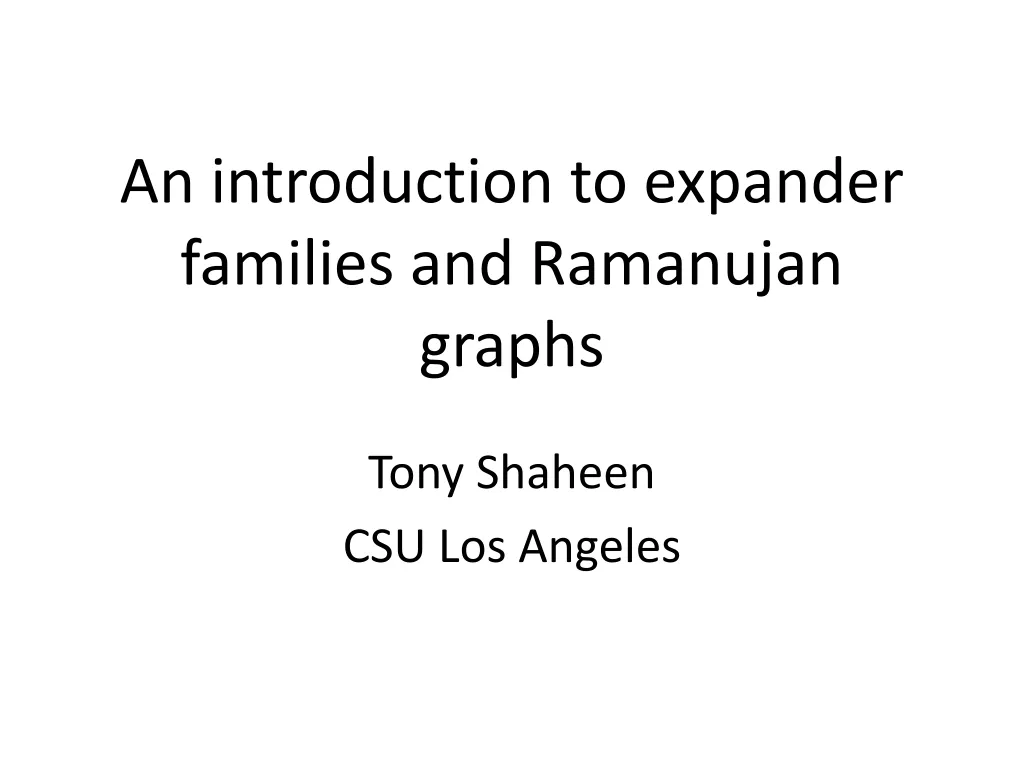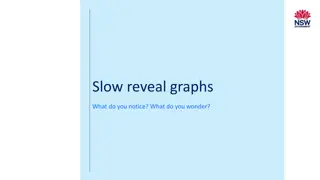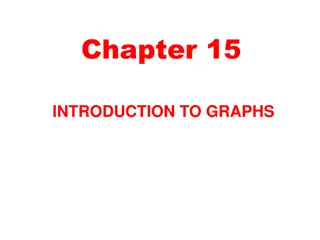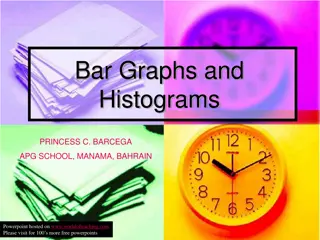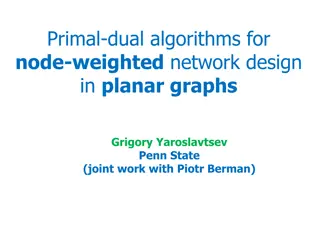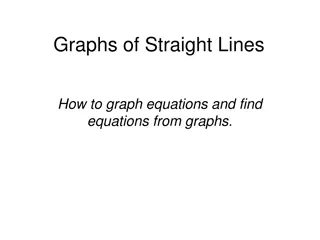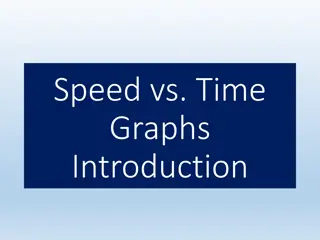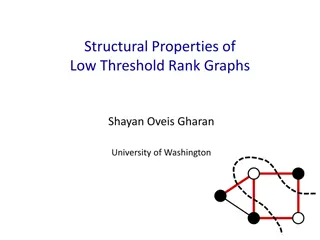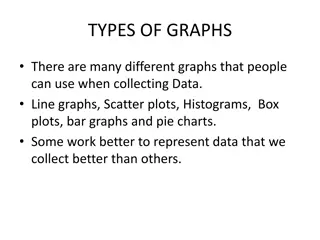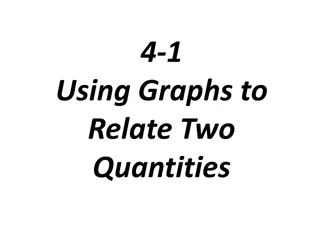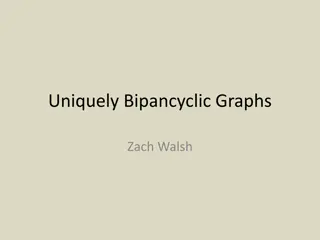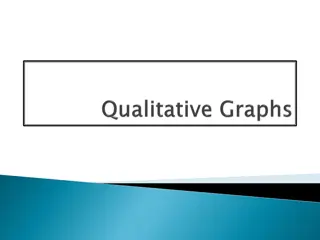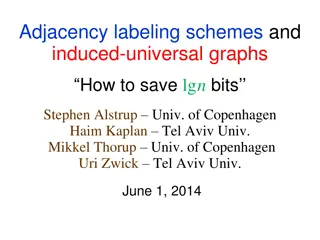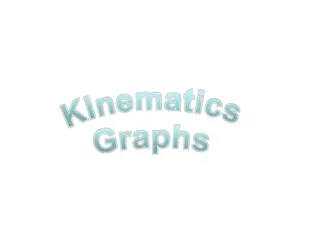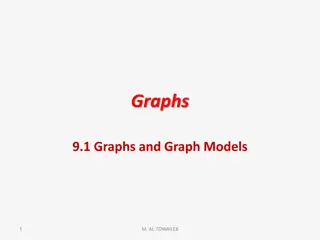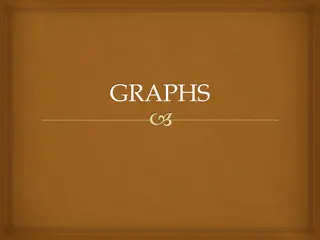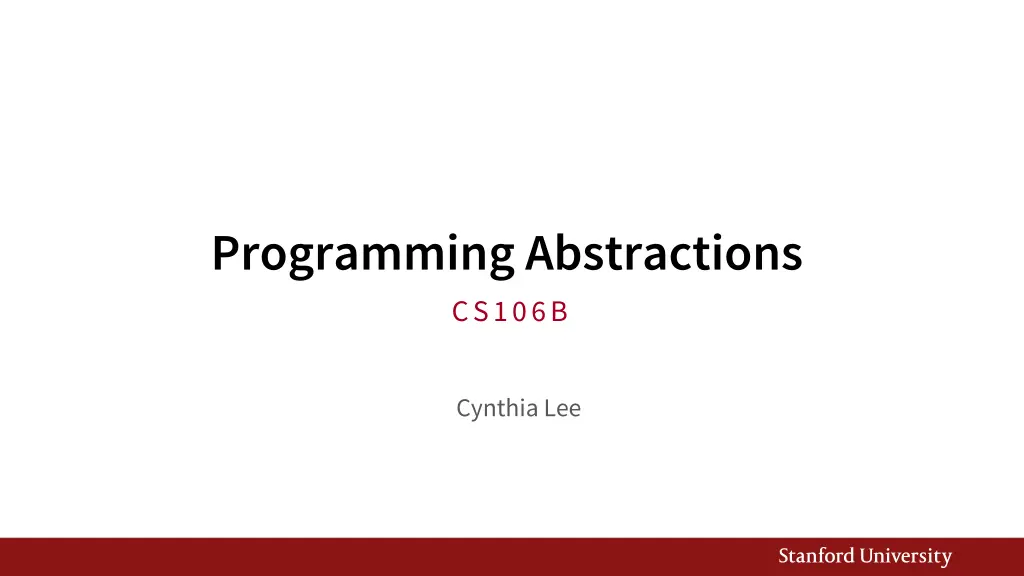
Exploring Graph Theory in Computer Science
Discover the fundamentals of graphs in computer science, including topics like theorems, breadth-first search, Dijkstra's algorithm, and more. Learn about the significance of graphs and their applications in representing relationships and structures. Dive into the world of vertices, edges, directed and undirected graphs, and the importance of labels and weights in graph theory.
Download Presentation

Please find below an Image/Link to download the presentation.
The content on the website is provided AS IS for your information and personal use only. It may not be sold, licensed, or shared on other websites without obtaining consent from the author. If you encounter any issues during the download, it is possible that the publisher has removed the file from their server.
You are allowed to download the files provided on this website for personal or commercial use, subject to the condition that they are used lawfully. All files are the property of their respective owners.
The content on the website is provided AS IS for your information and personal use only. It may not be sold, licensed, or shared on other websites without obtaining consent from the author.
E N D
Presentation Transcript
Programming Abstractions CS106B Cynthia Lee
Upcoming Topics Graphs! 1. Basics 2. Theorems What are some things we can prove about graphs? 3. Breadth-first search on a graph Spoiler: just a very, very small change to tree version 4. Dijkstra s shortest paths algorithm Spoiler: just a very, very small change to BFS 5. A* shortest pathsalgorithm Spoiler: just a very, very small change to Dijkstra s 6. Minimum Spanning Tree Kruskal salgorithm What are they? How do we represent them?
Graphs What are graphs? What are they good for?
Graph This file is licensed under the Creative Commons Attribution 3.0 Unported license. Jfd34 http://commons.wikimedia.org/wiki/File:Ryan_ten_Doeschate_ODI_batting_graph.svg
Graphs in Computer Science A graph is a mathematical structure for representing relationships A set V of vertices (or nodes) A set E of edges (or arcs) connecting a pair of vertices Slide by Keith Schwarz
A Social Network Slide by Keith Schwarz
Chemical Bonds Slide by Keith Schwarz http://4.bp.blogspot.com/-xCtBJ8lKHqA/Tjm0BONWBRI/AAAAAAAAAK4/-mHrbAUOHHg/s1600/Ethanol2.gif
Slide by Keith Schwarz http://strangemaps.files.wordpress.com/2007/02/fullinterstatemap-web.jpg
9 Internet This file is licensed under the Creative Commons Attribution 2.5 Generic license. The Opte Project http://commons.wikimedia.org/wiki/File:Internet_map_1024.jpg
A graph is a mathematical structure for representing relationships A set V of vertices (or nodes) Often have an associated label A set E of edges (or arcs) connecting a pair of vertices Often have an associated cost or weight A graph may be directed (an edge from A to B only allow you to go from A to B, not B to A) or undirected (an edge between A and B allows travel in both directions) We talk about the number of vertices or edges as the size of the set, using the set theory notation for size: |V| and |E|
Boggle as a graph Vertex = letter cube; Edge = connection to neighboring cube
Maze as graph If a maze is a graph, what is a vertex and what is an edge?
Graphs Diagrams each show a graph with four vertices: Apple, Banana, Pear, Plum. Each answer choice has different edge sets. How many of the following are valid graphs? A: no edges B: Apple to Plum directed, Apple to banana undirected C: Apple and Banana point to each other. Two edges point from Plum to Pear A) 0 B) 1 C) 2 D) 3
Graph terminology: Paths path: A path from vertex a to b is a sequence of edges that can be followed starting from a to reach b. can be represented as vertices visited, or edges taken Example: one path from V to Z: {b, h} or {V, X, Z} V path length: Number of vertices or edges contained in the path. b a d U X Z h c e neighboror adjacent: Two vertices connected directly by an edge. example: V and X W g f Y
Graph terminology: Reachability, connectedness reachable: Vertex a is reachable from b if a path exists from a to b. a b d c connected: A graph is connected if every vertex is reachable from every other. e complete: If every vertex has a direct edge to every other. a b c d
Graph terminology: Loops and cycles cycle: A path that begins and ends at the same node. example: {V, X, Y, W, U, V}. example: {U, W, V, U}. acyclic graph: One that does not contain any cycles. V a b d U X Z loop: An edge directly from a node to itself. Many graphs don't allow loops. h e c W g f Y
Graph terminology: Weighted graphs weight: Cost associated with a given edge. Some graphs have weighted edges, and some are unweighted. Edges in an unweighted graph can be thought of as having equal weight (e.g. all 0, or all 1, etc.) Most graphs do not allow negative weights. example: graph of airline flights, weighted by miles between cities: PVD ORD SFO LGA HNL LAX DFW MIA
Representing Graphs Ways we could implement a Graph class
Representing Graphs: Adjacency matrix We can represent a graph as a Grid<bool> (unweighted) or Grid<int> (weighted) 0 1 1 0 0 0 1 0 1 1 1 0 1 1 0 1 0 1 0 1 1 0 1 1 0 1 0 1 0 1 0 0 1 1 1 0
Representing Graphs: Adjacency list Map<Node*, Set<Node*>> We can represent a graph as a map from nodes to the set of nodes each node is connected to. Node Connected To Slide by Keith Schwarz
Common ways of representing graphs Adjacency list: Map<Node*, Set<Node*>> Adjacency matrix: Grid<bool> unweighted Grid<int> weighted How many of the following are true? Adjacency list can be used for directed graphs Adjacency list can be used for undirected graphs Adjacency matrix can be used for directed graphs Adjacency matrix can be used for undirected graphs (A) 0 (B) 1 (C) 2 (D) 3 (E) 4
Graph Theory Just a little taste of theorems about graphs
Graphs lend themselves to fun theorems and proofs of said theorems! Any graph with 6 vertices contains either a triangle (3 vertices with all pairs having an edge) or an empty triangle (3 vertices no two pairs having an edge)
Eulerian graphs Let G be an undirected graph A graph is Eulerian if it can drawn without lifting the pen and without repeating edges Diagram shows a graph with four vertices, which are all fully connected with each other by undirected edges (6 edges in total). Is this graph Eulerian?
Eulerian graphs Diagram shows a graph with five vertices, four of which are all fully connected with each other by undirected edges (6 edges in total). The 5th vertex is connected to two of the remaining four vertices by an edge. (6 + 2 = 8 edges in total) drawn without lifting the pen and without repeating edges Let G be an undirected graph A graph is Eulerian if it can What about this graph?
Our second graph theorem Definition: Degree of a vertex: number of edges adjacent to it Euler s theorem: a connected graph is Eulerian iff the number of vertices with odd degrees is either 0 or 2 (eg all vertices or all but two have even degrees) Does it work for and ?

